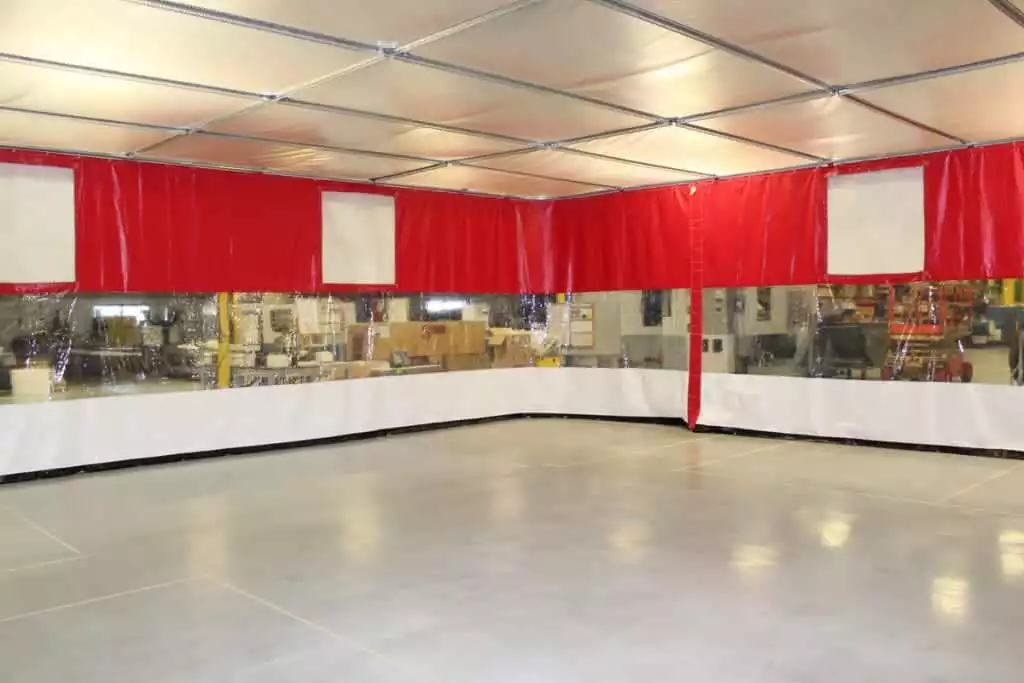Industrial curtain wall enclosures can be made using any vinyl, but due their ability to allow light to come through, 20 Mil. Clear and 14 oz. reinforced clear are widely used. Of the two light permissible options, 20 mil. clear is very popular. However, since it does not have any scrim or support inside of it, it is not the strongest material choice. For that reason, the use of the 14 oz. reinforced clear vinyl is highly recommended. It has a frosted finish, which will still allow light and shapes to pass through. However, unlike a 20 mil. clear, it has scrim inside of it, which makes it a stronger material. If you are looking for light to be blocked from entering your industrial curtain wall enclosure, using an opaque vinyl, available in a variety of colors, is another great option. A 14 oz. laminated or 18 oz. coated vinyl will provide strength and will also act as a light blocking ceiling cover.

